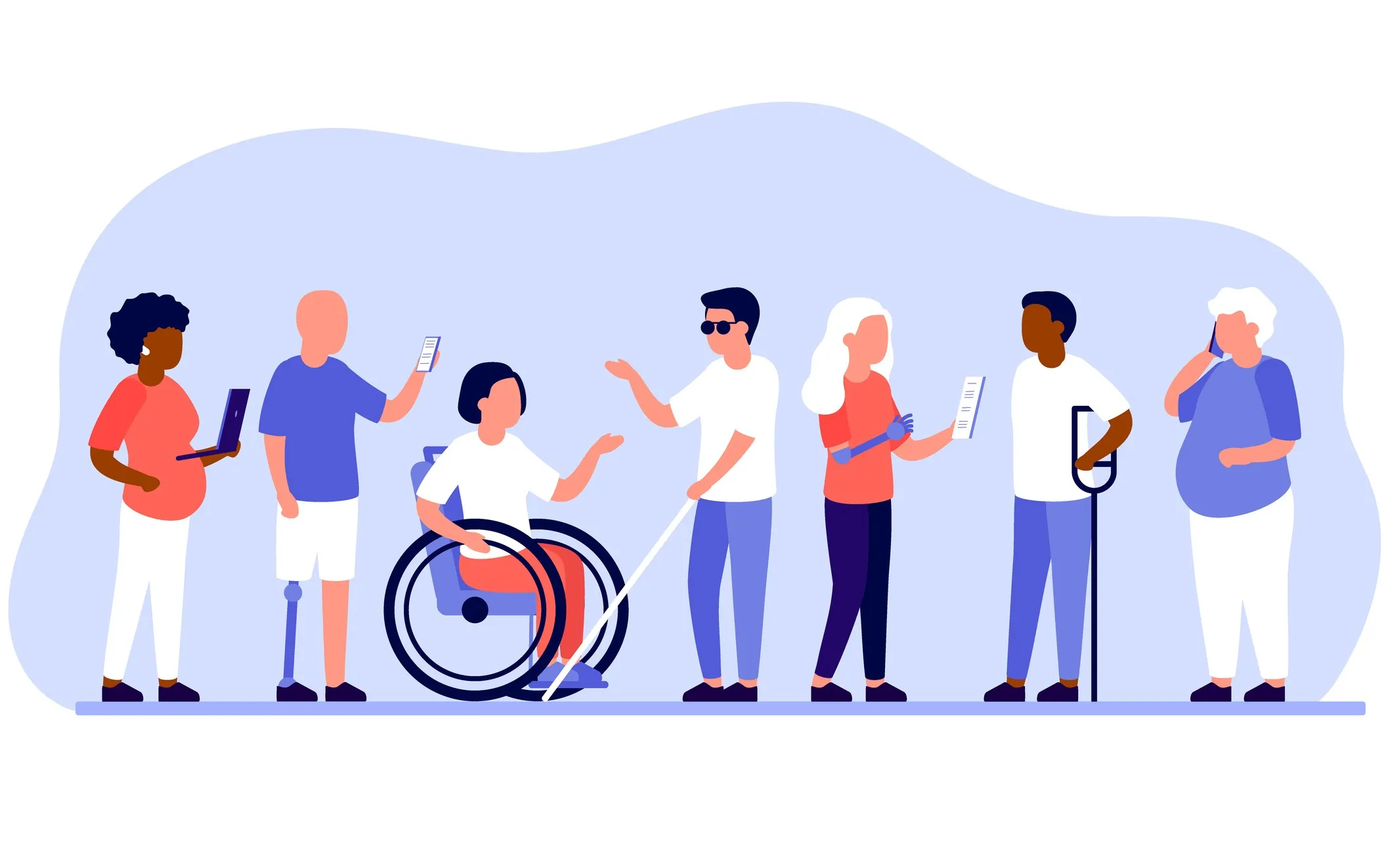Improve Workplace Accessibility by Offering Inclusive Benefits
Ensuring your business is accessible to employees with disabilities is not only a legal obligation but also a moral imperative.
By taking steps to accommodate individuals with disabilities, you can create a more inclusive and diverse workplace and enhance the overall productivity and morale of your team.
In this guide, we will discuss various ways in which organizations can make their businesses more accessible to employees with disabilities.
By creating an accessible workplace, you can tap into a pool of talented individuals who bring unique perspectives and skills to the table.
What Is Accessibility in a Workplace?
If you want to be an accessible employer you must remove the barriers within your physical environment, workplace culture, and job application procedures to make them inclusive and accommodating for all employees and candidates with different types of disabilities.
A proactive removal of obstacles to participation can make a person with different abilities comfortable and safe. Further resources like noise canceling headphones, lighting softness, or adjustable sitting tables can help certain disabled workers feel more comfortable.
An inclusive workplace should have braille signage, wheelchair ramps, and accessible restrooms, as well other resources such as digital accessibility tools, making information and communication technology accessible to one and all and compatible with assistive technology devices.
What Are the Types of Accessibility?
Workplace accessibility involves removing roadblocks so all types of disabled people can not only have physical accessibility in the workplace but also technology accessibility.
There are accessibility laws that need to be met to accommodate all types. The Americans with Disabilities Act or ADA prohibits discrimination in any area of public life, including jobs, based on disability.
- Auditory (difficulty hearing)
- Visual (color blindness, blind)
- Seizures (especially photosensitive epilepsy)
- Motor/mobility (anyone in a wheelchair)
- Learning/cognitive (autism, dyslexia, aphasia, attention deficit)
How Do I Make My Workspace Accessible?
Creating an accessible workplace is crucial for ensuring that everyone can work comfortably and efficiently. By making reasonable accommodations, you can improve the accessibility of your workspace and create a more inclusive environment for all your colleagues.
1. Provide Training and Awareness
Train other employees: How to interact with and support workers with disabilities. Educate employees on the importance of inclusive language and behavior. Provide on the job training to remove attitudinal awareness, ensure everyone is treated equally.
Train Managers on How to Work with Employees With a Range of Abilities: Many people who are managing disabled employees feel intimidated to work alongside them. Often this is based upon a lack of knowledge. It is imperative to provide support and training to anyone in a management position.
Require Unconscious Bias Training for All Employees: Everyone has unconscious beliefs and varied perspectives about different identity and social groups, and these stereotypes form and exist outside of the conscious awareness. Regular learning sessions can eliminate unfair discriminatory behavior and foster an inclusive work culture.
2. Create a Welcoming Environment
Begin by evaluating your current workspace to identify any potential barriers that may hinder physical accessibility. Check for any physical locations, obstructions or hazards that could make it difficult for individuals with disabilities to navigate the space and create workplace accommodations for them.
Allow for Ease of Mobility: Consider the layout of furniture and equipment to ensure that it is conducive to easy movement and use for all.
Ensure you create an accessible work environment for employees with mobility impairments by installing wheelchair access ramps, elevators, handicap restrooms, and automatic doors to make it easier to move around.
An inclusive workplace also provides designated parking spaces close to the entrance.
Keep Things Clutter Free: Organize your workspace and keep it clutter-free to facilitate easy access to essential items. Utilize storage solutions such as shelves, bins, and file organizers to maintain a tidy and efficient workspace, but make sure they are accessible to all.
Adjust the Furniture: Ensure that your furniture is ergonomically designed to promote comfort and support for all individuals. Use adjustable chairs and desks to accommodate different heights and body types. Provide footrests and supportive cushions for individuals who may need additional support.
Allow employees to customize their workstations to meet their unique needs.
Enhance Lighting and Visibility: Improve the lighting in your workspace to enhance visibility and reduce eye strain. Use task lighting to illuminate specific work areas and reduce glare on screens and surfaces.
Consider using natural light sources and adjustable lighting options to customize the brightness and color temperature. Some people are photosensitive, some are color blind.
3. Implement Flexible Work Policies
Offer flexible work hours and telecommuting options for employees with disabilities. Consider implementing a telecommuting policy to allow employees to work remotely or adjust their schedules to accommodate their individual needs.
Providing flexibility in meeting times and locations ensures all employees can participate.
Increased Productivity: Flexible work policies allow handicap employees to work at their own pace. This can lead to increased productivity and job satisfaction.
Employees can work during the hours when they feel best and are most productive.
Improve Work-Life Balance: Handicap employees often struggle with balancing work and personal life, having a flexible work policy enables them to prioritize their health, career development and well-being, resulting in a happier and more motivated workforce.
Enhance Job Satisfaction: Handicap employees may feel isolated or undervalued in traditional work settings, and flexible work policies give them the opportunity to do their job in an environment they are comfortable in.
This leads to greater job satisfaction and loyalty to the company.
Better Retention Rates: Companies that offer flexible work policies are more likely to retain handicap employees, reducing costly turnovers.
Handicap employees will also feel supported and valued by their employers.
Make Commuting Easy: On the days they do come into the office, adding Commuter Benefits can develop a commuter and transit benefit plan that helps people with disabilities overcome the challenges of getting to work.
Commuter Benefits help disabled employees pay for their commute via public transit (bus, train, subway, ferry) or vanpool by using pre-tax earnings—up to $315/month for transit and $315/month for qualified parking.
Payroll deductions of pre-tax commuting dollars allows employers to save on payroll taxes too.
4. Provide Assistive Technology
Providing assistive technology for handicap employees is crucial to ensure their equal participation in the workplace. It allows them to perform tasks independently and efficiently.
Understanding their needs, choosing the right tools, and offering training and support are essential steps in ensuring their success in the workplace.
Assessing Needs: Meet with the employee to understand their specific needs. Conduct an assessment to identify suitable assistive technology.
Consider their essential functions and job responsibilities to discern which tasks might require reasonable accommodation.
You can enable employees with disabilities to perform their job duties effectively.
Choosing the Right Technology: Research various available options and look for tools that align with the employee’s capabilities. Consider software, hardware, and communication devices.
You can invest in assistive technology such as screen readers, magnifiers, and speech recognition software and make sure that all electronic documents are compatible with screen reading software.
Training and Support: Provide training on how to use the assistive technology and offer ongoing support and troubleshooting assistance. Ensure the employee feels comfortable and confident using these tools.
5. Foster a Culture of Inclusion
Encourage open communication and collaboration among all employees and celebrate the unique contributions and perspectives of individuals with disabilities.
An accessible workplace educates its staff on how to interact with colleagues with disabilities respectfully and inclusively.
Offer sensitivity training to help employees understand and support their peers with disabilities. Encourage open communication to address any concerns or challenges with accessibility that may arise.
6. Ensure Every Aspect of the Recruitment Process Is Accessible
Applications for employment should be accessible, with reasonable accommodations made for people with visual impairments who perhaps are unable to read a screen and more.
Consider large printed or Braille versions, closed captioning, a sign language interpreter, or compatibility with assisted technology such as screen reading.
Make sure to always provide reasonable accommodations or alternate arrangements if someone cannot easily make it for an in-person interview. People with disabilities have diverse needs, but otherwise qualified applicants and candidates should not encounter any accessibility issues or employment discrimination during the hiring process.
7. Offer an Inclusive Benefits Package
How can you create accessibility in the workplace? With hectic work schedules, it’s hard enough for the average employee to eat a healthy lunch. Now, think about people with disabilities. Providing them with additional resources like Ticket Restaurant can ensure accessibility to a nutritious meal.
This Prepaid Card gives them the option to pay for meals during working hoursthrough food-delivery apps, facilitating their access to a healthy lunch. Funded monthly in the amount of your choice, it’s an easy way to improve workplace accessibility.
Thanks to the diversity of Lifestyle Benefits, you can tailor them to have a disability inclusion and make reasonable adjustments so your workplace continues to increase its accessibility.
Lifestyle Benefits let you support each person on your team in the best way possible; with options they want to use. The employer sets the limit, and the employees choose the options that matter most to them, from physical well-being and food to clothing and family.
By implementing these strategies, business owners can improve workplace accessibility and create a more inclusive and supportive work environment for employees with disabilities.
Remember, small changes can make a big difference in the lives of your team members.
Embracing diversity and accommodating the needs of all employees, including those with disabilities, is key to building a successful and thriving business and an accessible workplace for all.
For more information on how to improve workplace accessibility, contact Edenred today!







